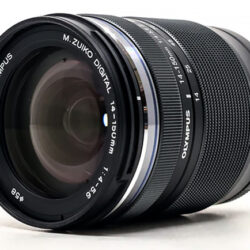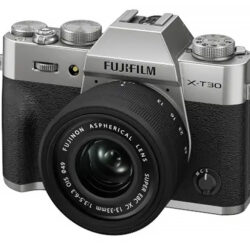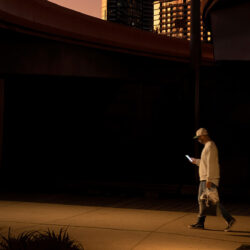This article is the first of three that will survey the best options for shoppers in the following categories: compact cameras, mirrorless camera kits and waterproof/action cameras.
This year has seen a resurgence in interest in compact digital cameras, mainly from younger people looking for a different experience than using their smartphones. Compact cameras have been trending on social media sites like TikTok and Instagram as social media influencers promote videos and snapshots taken with them.
Recent, high-end models like Fujifilm’s X100 VI camera have been so much in demand that they’re almost perpetually on back-order. Even older models like Canon’s Canon PowerShot G7 series and Sony’s RX100 series are being revived, with both companies releasing updates recently.
In this survey we present a list of the best currently-available compact cameras.
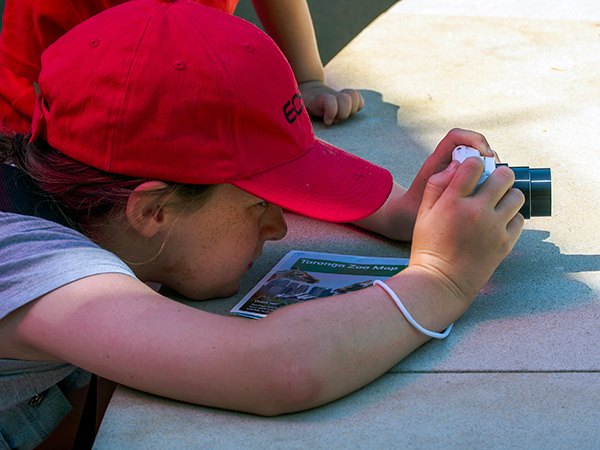
Compact cameras can be used by everyone and provide a real ‘photographic’ shooting experience.
Why Choose a Compact Camera?
Compact cameras usually have larger sensors and longer, faster lenses than smartphone cameras so they tend to deliver higher quality images and videos.
1. They give photographers more control over exposure parameters than a phone camera, allowing them to feel they have played a creative role in producing the end results.
2. Cameras with viewfinders are easier to use when you’re shooting in bright outdoor lighting which makes many LCD screens difficult to ‘read’. An EVF (electronic viewfinder) will give you a clear view of the scene so you know exactly what you’re getting.
Factors to Consider
Choosing a camera depends on how you plan to use it. For family use, simple controls should be key criteria. Enthusiasts require functions like P/A/S/M shooting options, ISO adjustments and raw file capture. Vloggers need at least 4K video recording plus the ability to live stream directly from the camera.
Consider the lens specifications; zoom lenses are more versatile than lenses with a single focal length and let you record a wider range of subjects. Fast maximum apertures of f/1-8 to f/2 let in more light than slower lenses that start at f/3.5 of smaller. (The ideal travel lens is a fast standard zoom (typically 24-75mm or 24-105mm equivalent).
You’ll need a weather-resistant camera and lenses if you’re working near the sea – or in a place subject to dust or spray – but check its rating. Most so-called ‘weatherproof’ cameras fall into the IPX1 category, which provides protection against light spray and dust. If you’re visiting the wet tropics or shooting out in the open, IP53 rated weatherproofing will provide much better protection.
Waterproof cameras are essential if you’re snorkelling or scuba diving and for any situation where the camera could be totally immersed. We’ll publish a separate round-up that includes ‘action cameras’ in a future post.
How much weight do you want to carry? Light gear frees you up to go further and do more so be ruthless when assessing the weight of your kit. Most airlines limit carry-on baggage to a maximum of 14 kg. On a light aircraft, that will probably be reduced to 7 kg.
Decide what to prioritise – stills or video. Stills are great for creating slideshows and if you want to print your photos. Video has more impact when shared on social media. Most cameras let you shoot both, although ‘vlogging’ cameras are biased towards video.
Finally, look at how long the camera has been available (we’ve listed each one’s release date). The longer it has been on the market the less likely it is to have the latest technology and the more likely its price will be discounted.
The cameras are listed below in order of weight with the lightest first. Where two models have the same weight, they’re listed in alphabetical order.
Fujifilm X half (July 2025)

Designed to appeal to traditionalists but offering features to attract content creators, the Fujifilm X half sports a vertical 18 megapixel, 1-inch (8.8 x 11.7 mm) CMOS sensor and a 32mm equivalent f/2.8 lens. Users can choose between stills and video modes or use the 2-in-1 option to combine two JPEG images. (Raw files cannot be recorded.) The camera comes with an optical viewfinder and is unstabilised.
Images are recorded to a single UHS-I SD card slot, while video capture is restricted to a vertical format 1080 x 1440 pixels at 24 fps. The camera has an analog-like Frame Advance Lever for engaging the next shot and a contrast-detect AF system with manual focus override. Face and Eye Detection are supported.
Users can choose from a range of Film Simulation effects in Film Camera mode and ‘develop’ the images using the X half app on a smart device. The NP-W126S rechargeable battery’s capacity is 880 frames/charge. The Fujifilm X half is available in Silver, Charcoal Silver and Black versions. It measures 106 x 64 x 30 mm and weighs 240 grams and its RRP is AU $1349.
Ricoh GR IV (May 2025)

The latest addition to Ricoh’s popular GR series of pocketable compact cameras boasts a 26-megapixel APS-C (23.5 x 15.7 mm) CMOS sensor with 5-axis sensor-shift image stabilisation offering 6 stops of shake correction and a 28mm equivalent f/2.8 lens. The low weight of 262 grams and 109 x 61 x 33 mm dimensions of the robust magnesium alloy body have been achieved by eliminating the viewfinder and using microSD UHS-1 cards plus 53GB of internal storage instead of regular SD media. An optional Ricoh GV-2 optical finder can be attached to the camera’s hot shoe.
The top mode dial locks to avoid accidental changes and the GR IV can record 14-bit DNG RAW files as well as JPEGs. It also supports Hybrid CD/PD autofocusing with face and eye detection. The fixed 3-inch LCD monitor has a resolution of 1,037,000 dots) and the camera can record HD (1920 x 1080) video at up to 60 fps. A built-in ND filter is available for exposure controls in bright conditions. The GR IV’s RRP is AU $2,200.
Sony ZV-1 Mark II (May 2023)

Available in black or white, Sony’s ZV-E1 vlogging camera comes with an 18–50 mm equivalent f/1.8-4 wide-angle zoom lens and a 20-megapixel 1.0-type (13.2 x 8.8 mm) Stacked CMOS sensor. A built-in 3-stop ND filter provides added control over exposure parameters. Compact and portable, the camera boasts Fast Hybrid autofocusing with human and animal subject recognition. There is no viewfinder but the camera sports a 3-inch vari-angle LCD touch-screen monitor with a resolution of 921,600 dots. Special features include a Bokeh Switch and Product Showcase Setting.
Users can record 4K video at up to 30 fps in XAVC S format or Full HD at up to 120 fps for up to 5x slow motion playback. The ZV-1 II supports S-Log3 and S-Gamut3.Cine picture profiles and includes a Built-in Intelligent 3-Capsule microphone with a wind screen to ensure clear voice recording. The maximum burst speed is 24 fps for up to 189 frames (JPEG) or 80 frames (Raw). The rechargeable battery can power up to 290 frames/charge and the camera weighs 292 grams and measures 106 x 60 x 47 mm. The ZV-E1’s RRP is AU $1199.
Canon PowerShot SX740 HS (July 2018)

This compact camera remains popular for its light weight of 299 grams, although at 110 x 64 x 40 mm it’s slightly larger than the PowerShot G7X III. It sports a relatively small 20-megapixel, 6.17 x 4.55 mm BSI-CMOS sensor and 24–960 mm equivalent f/3.3-6.9 zoom lens with optical (lens-shift) stabilisation. AiAF focusing includes face detection and a minimum focus of 10 mm in Macro mode.
There is no viewfinder but the 3-inch tilting LCD monitor has a resolution of 922,000 dots and can be flipped up for recording selfies. Images can only be recorded as JPEGs but up to 10 fps is possible in burst mode. The maximum video resolution is 3840 x 2160 at 30 fps but with a reduced angle of view. The camera has one UHS-I SD card slot and its battery capacity is 265 frames/charge. Wi-Fi and Bluetooth Low Energy Technology provide quick connections to a smart device with the Camera Connect App. The PowerShot G7X III’s RRP is AU $679.
Sony DSC-RX100 VII (July 2019)
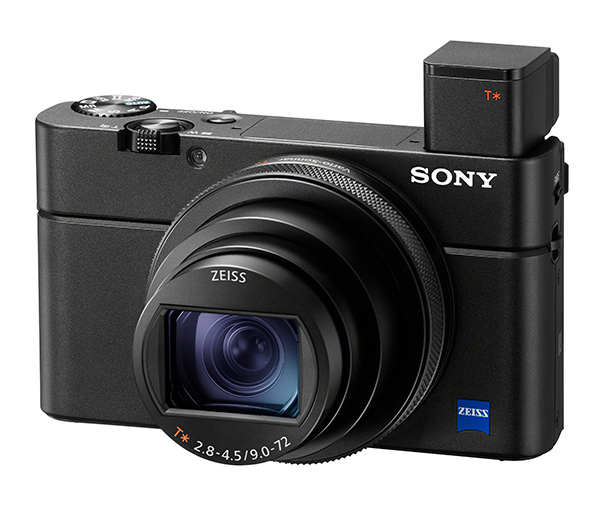
Another pocketable digicam, this time with a larger 20-megapixel, 1.0-type (13.2 x 8.8 mm) Stacked CMOS sensor and 24–200 mm equivalent f/2.8-4.5 zoom lens. The lens is complemented by fast Hybrid CD/PD autofocusing with Real-time Tracking and Real-time Eye AF plus 4-stop optical stabilisation. The camera has a novel pop-up EVF with 2,360,000 dots that supports 20-fps blackout-free viewing. Unfortunately, function buttons are small, the camera’s menus can be confusing to navigate and the touch screen can’t be used to adjust the menu or playback settings.
The RX100 VII achieves shutter speeds of up to 1/32000 second, while the sensor’s fast readout helps suppress rolling-shutter effect. Video can be recorded with 4K resolution at up to 30 fps. Touch Tracking is available for movies, along with HLG (Hybrid Log Gamma) for wide brightness range scenes. S-Log3 and S-Log2 Picture Profiles and Creative Style and Picture Effect options provide additional scope for creativity. The camera’s single UHS-I/ UHS-II SD slot is also Memory Stick Duo compatible. Battery capacity is 260 frames/charge and the DSC-RX100 VII includes a standard 3.5mm microphone port for professional sound track recordings. The camera body weighs 302 grams and measures 102 x 58 x 43 mm. The RX100 VII’s RRP AU $1699.
Canon PowerShot G7 X Mark III (July 2019)
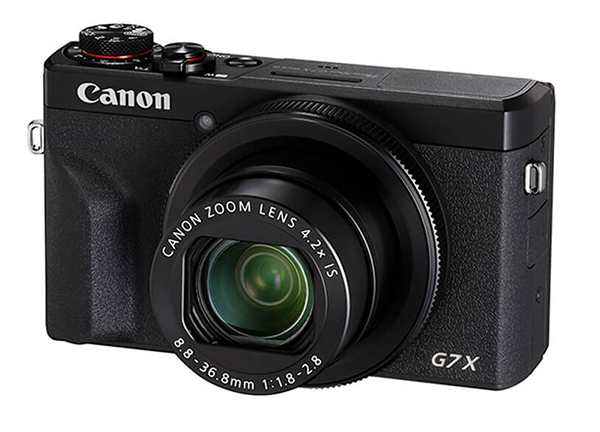
The 20-megapixel, 1.0-type sensor in Canon’s G7X III is backside-illuminated, rather than stacked, putting it technologically a little behind the capabilities of the Sony DSC-RX100 VII. But it’s larger than the sensor in the PowerShot SX740 HS, which means better image quality in dim lighting. The camera has a relatively fast f/1.8-2.8 24-100 mm equivalent zoom lens with optical IS, and contrast-detection AF. Unlike the Sony camera, it has no EVF but only a 3-inch tilting touch-screen LCD with a resolution of 1,040,000 dots.
Thanks to the electronic shutter, continuous shooting is supported at up to 30 fps or 8.3 fps with continuous AF. Users can shoot 4K (3840 x 2160) movies at up to 30 fps or FHD movies at up to 120 fps. A noteworthy feature is the ability to live stream video on YouTube straight from the camera. Recordings are stored on a single UHS-I SD card and the battery capacity is 235 frames/charge. It supports direct charging through its USB-C port and has built-in Wi-Fi and Bluetooth. The camera measures 105 x 61 x 41 mm and weighs only 304 grams with battery and memory card. The G7X III’s RRP is AU $1249.
Panasonic Lumix DC-TZ99 (December 2024)
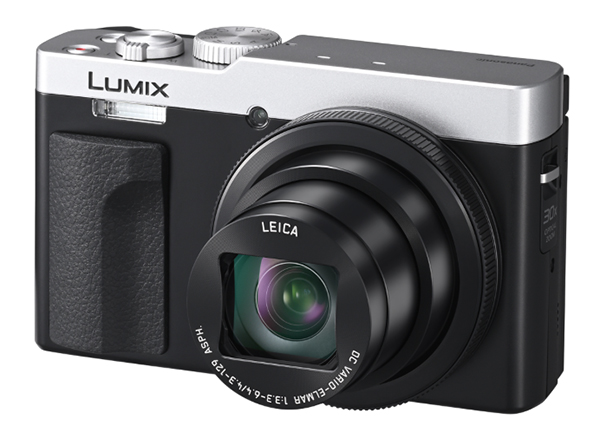
Panasonic’s TZ (‘travel zoom’) cameras have long been popular with travellers and anyone who wants an easy-to-use, lightweight camera. Weighing only 322 grams and measuring 112 x 68 x 43 mm the 20-megapixel TZ99 is the latest in the line. It features a 1/2.3″ (6.17 x 4.55 mm) BSI-CMOS sensor, Venus Engine processor and 24–720 mm equivalent f/3.3–6.4 lens with optical IS. Like many of its type, the TZ99 has no viewfinder but its 3-inch LCD flips up through 180 degrees for selfies and vlogging. Its resolution is relatively high at 1,840,000 dots. Continuous shooting is supported at up to 10 fps and users can record 4K movies at up to 30p.
Panasonic’s 4K PHOTO Burst, Stop/Start (S/S) and Pre-Burst modes are provided, along with the POST Focus and Focus Stacking functions. Users can extract 8-megapixel frames from recordings made in these modes and save them separately in JPEG format. Built-in Bluetooth lets users move content straight from the camera to their phone for instant sharing on social media. The camera also supports direct USB charging and has a single UHS-I SD card slot. The TZ99’s battery capacity is 380 frames/charge and the RRP is AU $999.
Leica D-Lux 8 (July 2024)
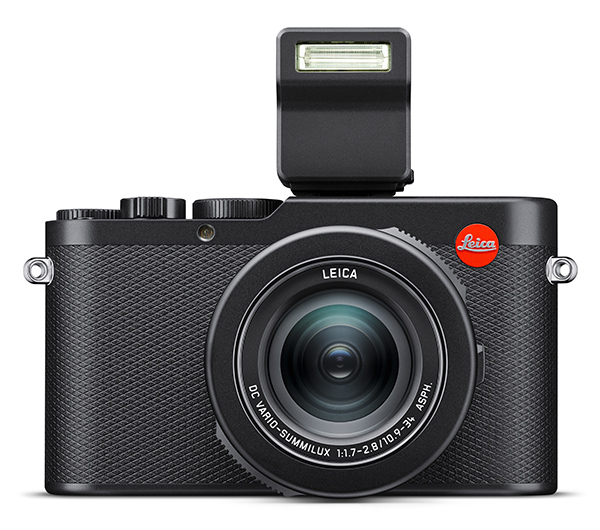
We’ve been conditioned to expect high prices from Leica and, and the 17-megapixel Leica D-Lux 8 is one of the more expensive models in this survey. However, its 17.3 x 13 mm M4/3 CMOS sensor is larger than the sensors in most other compacts and the camera is equipped with a relatively fast, f/1.7–2.8, 24–75mm equivalent lens that is optically stabilised. While the physical design of the camera is based upon Panasonic’s now-discontinued LX100 II, its image processor is Leica developed and the camera has a user-friendly Leica-designed interface. It is also supplied with a small, low-power flash.
This is very much a photographer’s camera. Image quality is up to expectations for the brand, including when the 4.3x – 6.2x digital zoom is engaged. Raw files are captured in the ‘universal’ DNG format and the resulting images can be printed to A2 size. The EVF is comfortable to use and has a high resolution of 2,360,000 dots. Continuous shooting is supported at up to 11 fps and the camera can also record 4K video at up to 30 fps. The single media slot accepts UHS-II SD cards and is located in the battery compartment. The battery is charged via a USB-C cable. The D-Lux 8 weighs 397 grams and measures 130 x 69 x 62 mm and its RRP is AU $2,890.
Canon PowerShot V1 (February 2025)
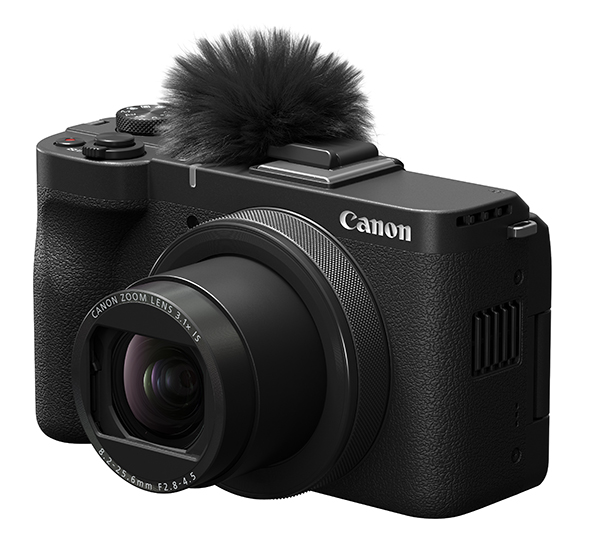
Another vlogging camera, the PowerShot V1 has a slightly larger-than-average 18.4 x 12.3 mm 22-megapixel Dual-Pixel CMOS AF II sensor and a 16-50mm equivalent f/2.8-4.5 zoom lens with a claimed 5 stops of optical IS. Without a viewfinder, framing of shots is done on the 3-inch vari-angle LCD, which has a resolution of 1,040,000 dots. Users can record 4K video at up to 60 fps with a 1.4x crop or full-width 4K at up to 30p from 5.7K capture. They can also utilise Canon Log 3 and additional Movie Electronic IS for recordings. The multi-function hotshoe accepts optional lights or audio accessories and the camera has headphone and microphone ports.
Video can be live streamed directly from the camera through the Canon Camera Connect App and Live Switcher Mobile App. A built-in cooling fan allows recordings to be extended to a little over 2 hours. Continuous recording of stills shots is supported at up to 15 fps with the mechanical shutter or up to 30 fps with the electronic shutter. Image data is recorded on a single UHS-II SD card and the LP-E17supports USB charging. The camera weighs 429 grams with battery and memory card included and measures 118 x 68 x 53 mm. The PowerShot V1 has an RRP of AU $1449.
Sony DSC-RX1R III (July 2025)
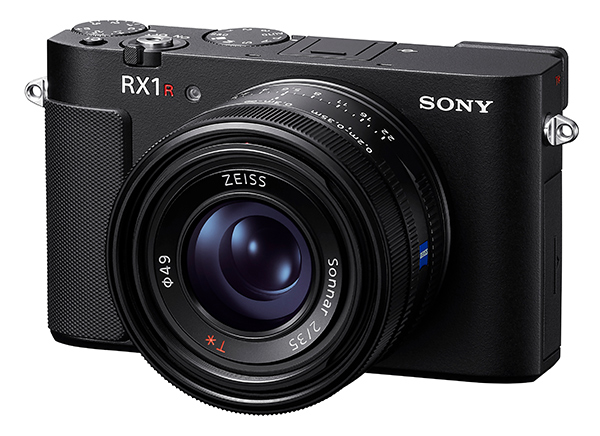
This is by far the most expensive camera in the survey, largely because of its 61-megapixel full frame BSI-CMOS sensor and AI processing unit. The fixed 35 mm f/2 Sonnar T* lens is optimised for the sensor. The Hybrid AF system contains 693 phase detection points and includes human, animal, bird, insect, car, train and airplane subject recognition and tracking. The AI processing unit can also perform human pose estimation, enabling the camera to recognise not just eyes, but body and head position. The latest AF algorithms support autofocusing in light levels as low as EV-4.0 in AF-S mode.
The RX1R III has a lightweight magnesium alloy chassis and a built-in EVF with a resolution of 2,360,000 dots. A special Step Crop Shooting function that lets users switch between 35 mm (60 MP), 50 mm (29 MP), and 70 mm (15 MP) equivalents with a simple one-touch operation. Creative Look modes include 12 presets that provide a wide range of variations in colour, colour depth, brightness, contrast and sharpness. Users can record 4K video at up to 30 fps and the NP-FW50 rechargeable battery pack has a capacity of 300 images per charge and supports USB Power Delivery (PD). The RX1R III weighs 498 grams and measures 113 x 68 x 88 mm. Its RRP is AU $7999.
Fujifilm X100VI (February 2024)

Fujifilm’s premium APS-C compact camera has been so popular it is almost always on back-order. It features a dial-based design with a leaf shutter, internal ND filter and built-in flash and comes with a 40.2-megapixel X-Trans 5 HR sensor, X-Processor 5 processor and 35mm equivalent f/2 lens. Built-in 5-axis stabilisation provides up to 6 stops of shake correction. This camera is offered in the regular silver and black colours and boasts an EVF with 3,690,000 dots. Its 425-point Hybrid PDAF system includes subject recognition and tracking for humans, animals, birds, cars, motorcycles, bicycles, airplanes, trains, insects and drones, which works for both stills and video. Like other Fujifilm cameras, the X100VI comes with 20 built-in Film Simulation modes.
Fujifilm has added HEIF compression to the regular JPEG and RAF.RAW file formats and the camera can also record 6.2K/30p movies, although it crops the frame by a factor of 1.23x, applying the equivalent of a 43mm lens framing. 4K video can be recorded at up to 60 fps with 4:2:2 10-bit colour quality. It also supports continuous shooting at up to 11 fps. Built-in Wi-Fi and Bluetooth and a new Frame.io Camera to Cloud interface plus the Fujifilm X App enable the new camera to be connected wirelessly to an active internet connection so users can automatically upload photos and videos straight after they were captured. The X100VI has a single UHS-I SD slot and rechargeable battery with a capacity of 450 frames/charge. It weighs 521 grams and measures 128 x 75 x 55 mm and its RRP is AU $2899.
Panasonic FZ80D (July 2024)

The long 20–1200 mm equivalent f/2.8-5.9 lens makes Panasonic’s FZ80D ideal for shooting sports and wildlife. This camera has an 18-megapixel 1/2.3″ (6.17 x 4.55 mm) BSI-CMOS sensor and POWER O.I.S. (Optical Image Stabiliser) to suppress camera shake at the tele-end of the zoom range. A Zoom Compose Assist function lets you quickly zoom out with a single press of a button when you’ve lost your subject during telephoto shooting. Autofocusing is contrast-based and the camera includes a special Post Focus feature that lets users touch the area they want to be in focus, even after the shot has been taken.
The 3.0-inch touch-screen monitor has a resolution of 1,840,000 dots, while the camera also boasts an EVF with a resolution 2,360,000 dots. The FZ80D includes 4K Video/Photo recording capabilities that let users extract an 8-megapixel photo out of 4K video and save it. Continuous shooting is supported at up to 10 fps and the camera’s battery has a capacity of 300 frames/charge and can be recharged via a USB Type-C cable. The FZ80D weighs 640 grams and measures 130 x 94 x 125 mm. Its RRP is AU $849.
Nikon Coolpix P1100 (February 2025)
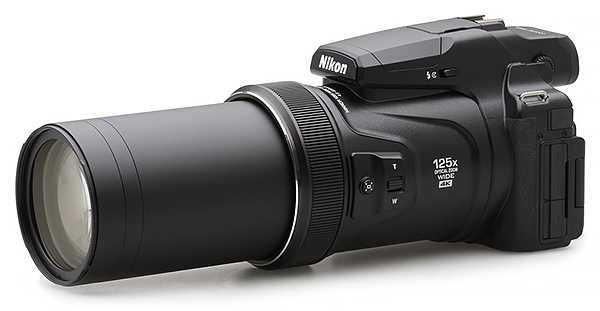
The largest and heaviest camera in this survey, Nikon’s Coolpix 1100 has a 16-megapixel 1/2.3″ (6.17 x 4.55 mm) BSI-CMOS sensor but also the longest zoom lens. Its optically stabilised 24–3000 mm f/2.8-8 lens is useful for sports, wildlife and astrophotography and the camera includes a digital zoom function that extends its reach to the equivalent of 12,000mm. Macro shooting is possible to within 1 cm of a subject.
Autofocusing is contrast-based and the camera can record 4K UHD video at up to 30 fps. The rear 3.2-inch LCD monitor is fully articulated and has a resolution of 921.000 dots. The camera also has a built-in EVF with a resolution of 2,360,000 dots. Image and video data is stored on a single UHS-I SD card. Continuous shooting is supported at up to 7 fps and the EN-EL20a battery has a capacity of 250 frames/charge. The camera weighs 1410 grams and measures 146 x 119 x 181 mm. Its RRP is AU $1749.
Photo Review Retail Partners

